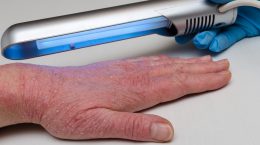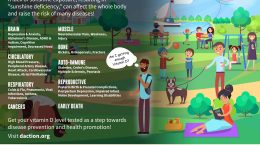Published on May 16, 2019
Current public health messaging tells us to avoid the sun due to skin cancer fears, but this advice ignores the fact that humans have a long cultural history of appreciation of the sun and use of UV radiation for disease treatment. Following is a summary of the history of phototherapy from Dr. Alexander Wunsch’s presentation at the 2014 GrassrootsHealth Seminar on Vitamin D for Public Health: Integrating Sunshine, Supplements and Measurement for Optimal Health.
With industrialization came “diseases of darkness” such as rickets and tuberculosis. This was due to people living and working in cities which reduced people’s access to sunlight due to indoor work, smog, and narrow apartment blocks. Children living in cities couldn’t develop strong and healthy bones and physicians started to take the lack of sunlight into consideration because rickets patients would recover if they were brought back into nature and sunlight.
Niels Ryberg Finsen was the first to study the scientific effects of sunlight. In 1903, he won the Nobel Peace Award for his discovery of phototherapy treatment for the skin manifestation of tuberculosis, lupus vulgaris. In this treatment, nurses called “light elves” used concentrated sunlight using a tool with a quartz lens on the affected area. The before and after effects of this treatment are shown in the picture below. As his patient population grew, he invented electrical carbon arc lamps which used artificial light to treat lupus vulgaris.
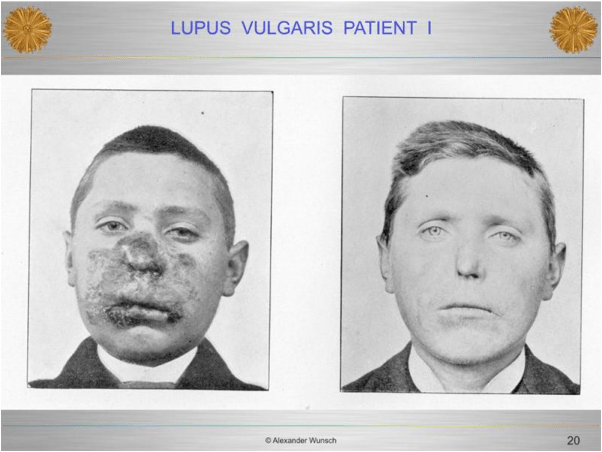
Finsen’s work led to other developments in phototherapy such as mountain heliotherapy, which was invented by Dr. August Rollier’s who was known as the “sun doctor.” In heliotherapy, the patient is gradually exposed to sunlight so that they become acclimated to local sun conditions. Below is a series of photos showing a young boy who had a severe manifestation of systemic tuberculosis before and after undergoing heliotherapy.
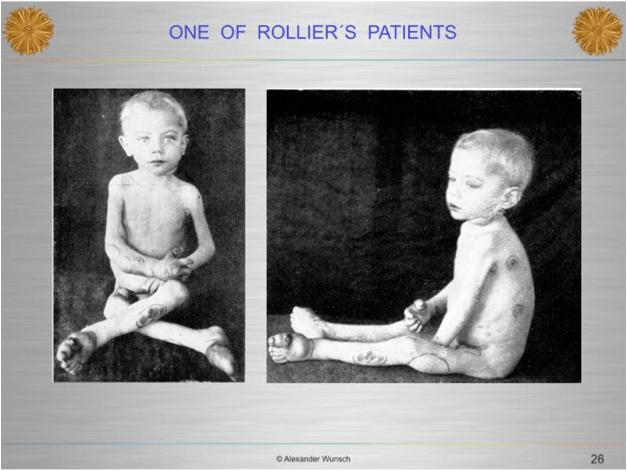
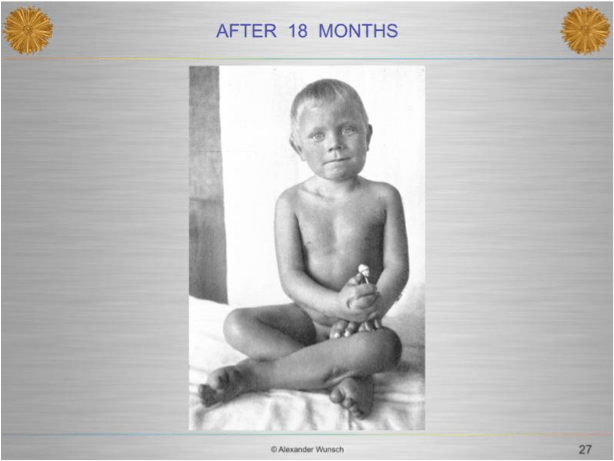

As you can see, history demonstrates that natural as well as artificial sunlight can act as a major interventional tool to prevent and heal devastating diseases. In fact, before antibiotics, the medical community embraced phototherapy as the state-of-the-art treatment for a variety of ills. Phototherapy is still used to today to treat conditions such as eczema, psoriasis, jaundice, mood and sleep disorders, and some cancers. The healing power of the sun is a powerful reminder that the sun plays an important role in human health should not be avoided.
Are you using sun exposure as a source of vitamin D?
Is sun exposure helping to improve your vitamin D level? Make sure you know your vitamin D level, and see if you are in the target range of 40-60 ng/ml (100-150 nmol/L). Find out your levels today! Log on to the shop (click the link below) to get your tests and see for yourself if your levels can be improved.
Make sure you track your results before and after, about every 6 months!
How can I track my sun exposure and my vitamin D levels?
To help you track your sun exposure and nutrient levels, GrassrootsHealth has created an online tracking system called myData-myAnswers. You can also track your supplemental and dietary nutrient intake to see how they impact your nutrient levels. Check it out today!






